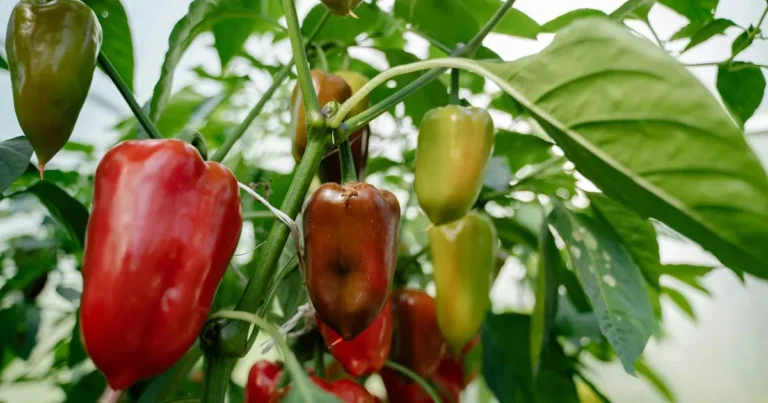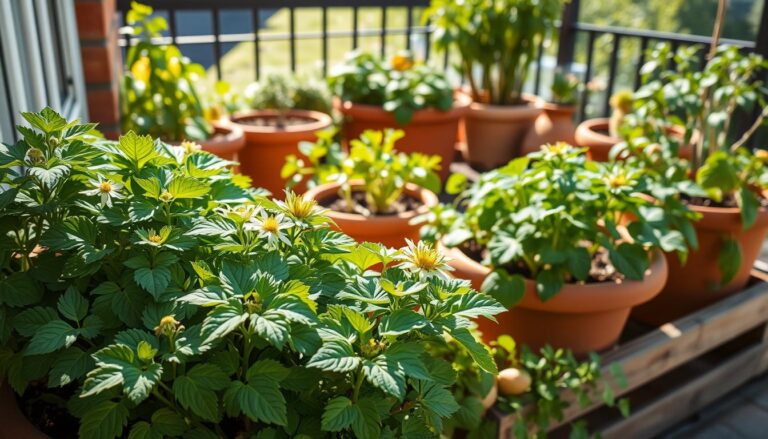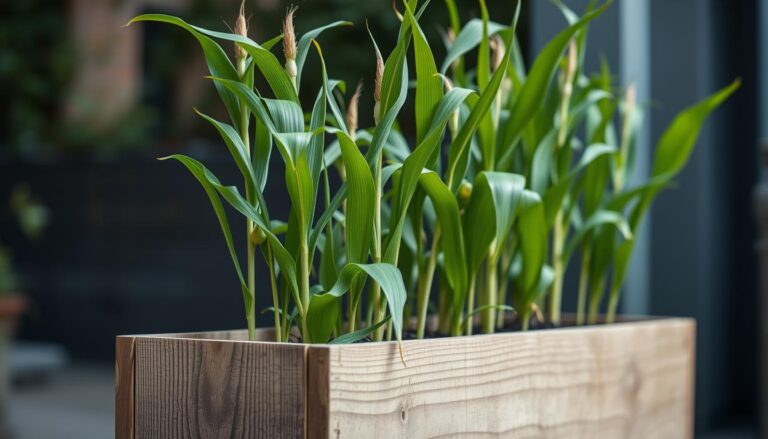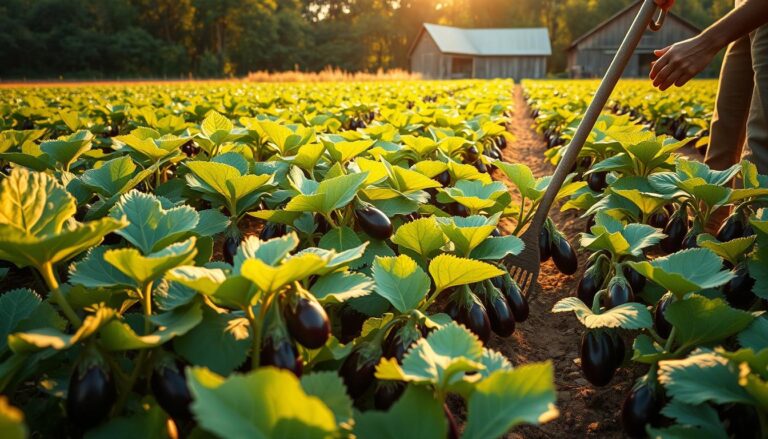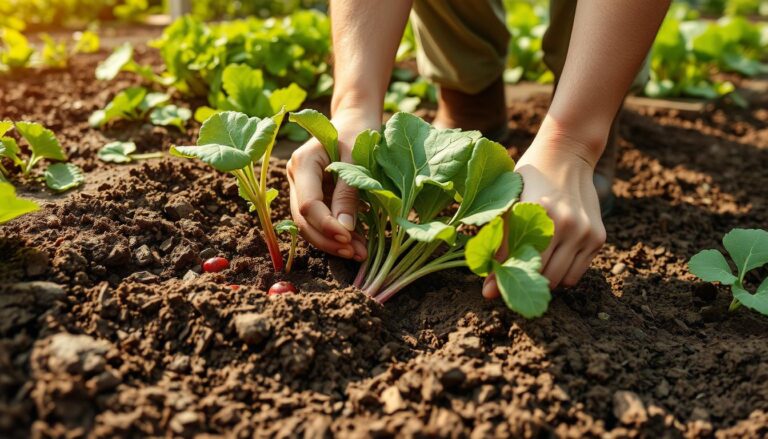How Do You Grow Potatoes in a Pot? Tips for Success
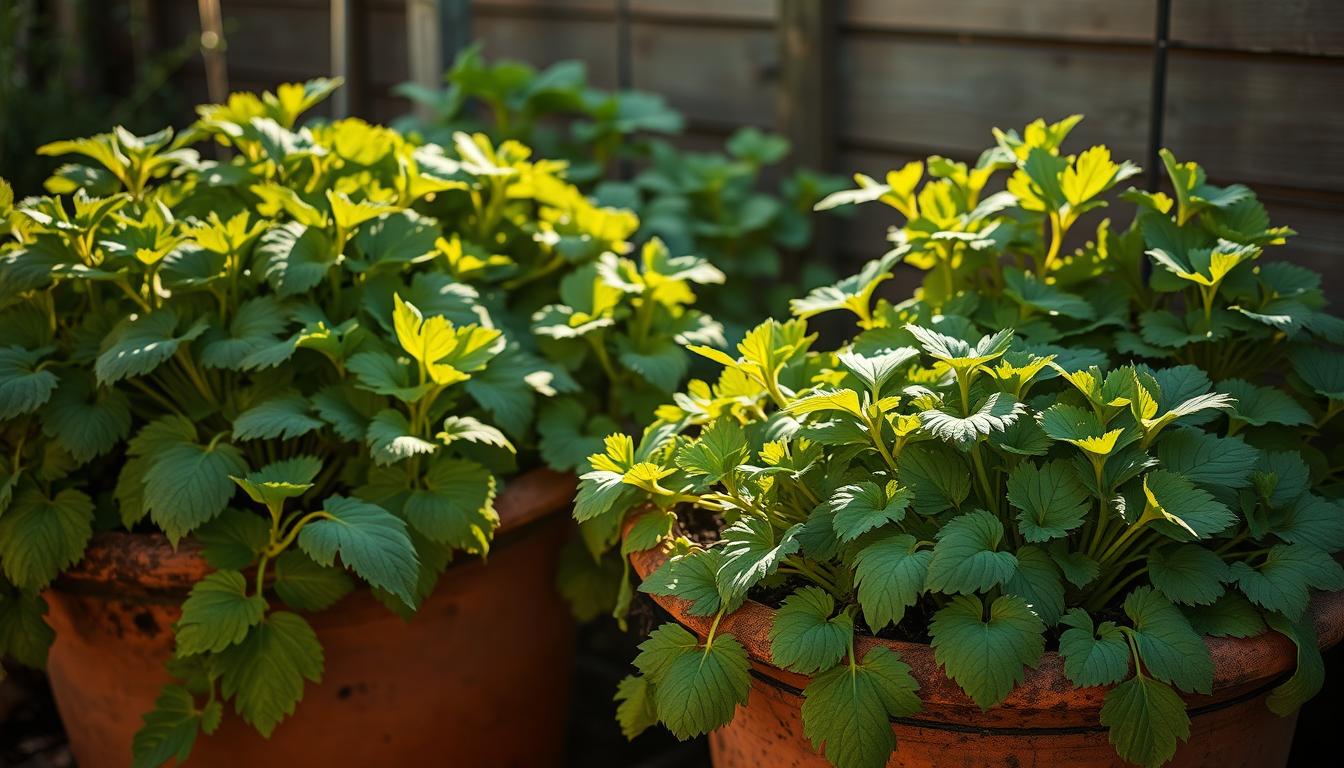
Table of Contents
Growing potatoes in containers is rewarding. It gives you a lot of tasty tubers. Experts say the secret is to pick the best container, soil, and potato type.
Carrie Spoonemore and Linda Langelo offer great tips on growing potatoes in pots. Their advice will help you have a great harvest.
First, choose the right container and potato type. With good care, you’ll soon have homegrown potatoes to enjoy.
The Benefits of Growing Potatoes in Containers
Growing potatoes in containers is great for gardeners with little space. It lets you grow potatoes even in tiny gardens. This is perfect for city gardeners or those with small outdoor areas.
Space Efficiency for Small Gardens
One big plus of container-grown potatoes is saving space. You can put containers on balconies, patios, or indoors if it’s light enough. This means even the tiniest gardens can grow potatoes well.
Better Control Over Growing Conditions
With container-grown potatoes, you have total control over the soil. You can make the soil just right for potatoes, giving them all they need. Plus, it’s easier to spot pests and diseases early, so you can act fast.
Reduced Pest and Disease Problems
Container-grown potatoes have fewer pests and diseases. The soil is contained, so it’s less likely to get infected. It’s also simpler to rotate crops and follow other best practices to avoid disease.
Container gardening for potatoes means a big harvest with little effort. It’s great for beginners or those who want to use their space wisely.
Selecting the Right Containers for Potato Growing
Choosing the right container is key to a successful potato garden. You need to think about a few things to get a good harvest.
Container Size and Depth Requirements
Look for a container that’s 10 to 15 gallons and 2 to 3 feet deep. This size lets the potatoes grow well and gives enough soil. A deeper container means more hilling, which helps you get more potatoes.
Material Options: Plastic, Fabric, and Wood
There are many materials for potato containers, like plastic, fabric, and wood. Make sure they’re safe for food to avoid contamination. Plastic is durable and easy to clean. Fabric pots drain well and breathe. Wooden containers add charm but need more care.
Drainage Considerations
Drainage is important to avoid soggy soil and diseases. Make sure your container has enough holes for water to drain. Adding gravel or broken pottery at the bottom helps too.
Positioning Your Containers
Put your containers where they get lots of sunlight. Most potatoes need full sun to grow well. Also, think about how easy it is to get to them for upkeep and picking.
Choosing the Best Potatoes to Grow in Pots
Choosing the right potato variety is key for a successful harvest in pots. Look at maturity days, growth habits, and disease resistance. This ensures your container garden thrives.
Early Season Varieties
Early season potatoes mature fast, in 70-100 days. They’re perfect for container gardens because they yield quickly. ‘Red Bliss’ and ‘Yukon Gold’ are favorites for their taste and early ripeness.
Mid-Season Options
Mid-season potatoes take 100-120 days to mature. They often give more yield than early varieties. ‘Katahdin’ and ‘All Blue’ are great for containers, balancing yield and maturity.
Late Season Potatoes
Late season potatoes need the longest time, 120 days or more. They can be harder to grow in containers but are worth it. ‘Russet’ potatoes are a good choice for their high yield and quality.
Specialty and Fingerling Varieties
Specialty and fingerling potatoes, like ‘Fingerling’ and ‘Purple Peruvian’, are becoming popular. They add variety to your garden and are compact, fitting well in small spaces.
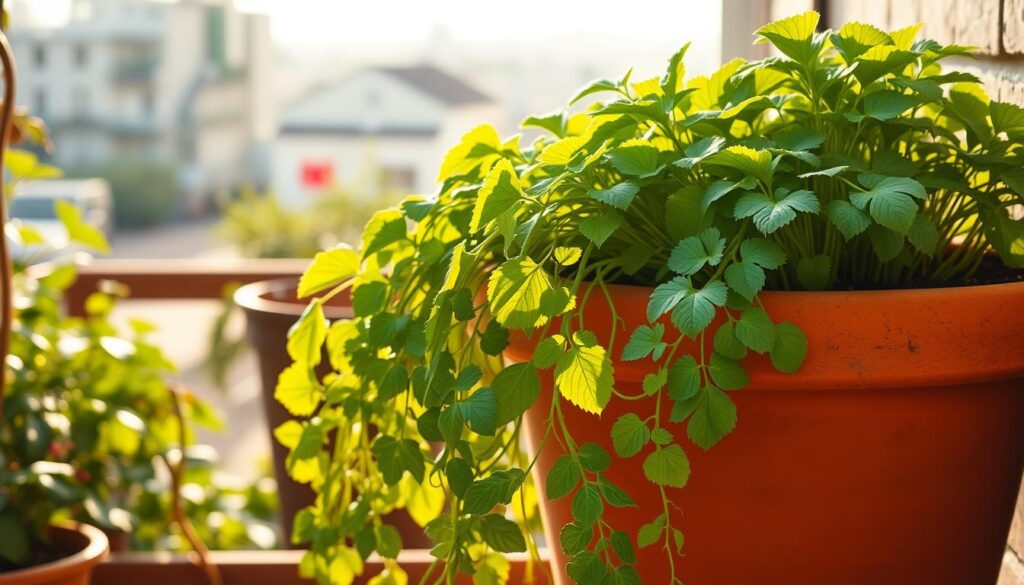
Growing potatoes in small spaces needs careful variety selection. Compact varieties like Red, Yukon Gold, Fingerling, and Purple potatoes are ideal. They grow well in containers and yield a lot. By picking the right variety, you can have a big harvest in even the smallest spaces.
Soil and Nutrient Requirements for Container Gardening Potatoes
Growing potatoes in containers needs a special soil mix. You must make a soil that helps potatoes grow well.
Creating the Ideal Soil Mix
The best soil for container potatoes is rich and drains well. Choose a good potting soil for containers. Adding compost can make the soil better for plants.
Fertilizer Recommendations
Fertilizing potatoes in containers is important. Use a fertilizer with a 10-10-10 N-P-K ratio. Follow the instructions on how much to use.
Organic fertilizers like fish bone meal or alfalfa meal are good too. They give nutrients slowly.
pH Considerations
The soil’s pH affects potato growth. Potatoes do best in slightly acidic to neutral soil, between 5.2 and 6.0. Check your soil pH often and adjust it if needed.
By focusing on soil and nutrients, you can grow great potatoes in containers. With the right soil, fertilizer, and pH, you’ll get a big harvest.
How Do You Grow Potatoes in a Pot: Step-by-Step Guide
Here’s a simple guide to grow potatoes in containers. It’s a great way to get a lot of potatoes, even if you have a small space.
Preparing Seed Potatoes
To begin, prepare your seed potatoes. Cut the seed potatoes into pieces, making sure each has at least one eye. Let these pieces dry for a day or two. This helps prevent rot when you plant them.
Planting Techniques
When planting, put the seed potato pieces 10 to 12 inches apart in the container. Make sure the eyes face upwards. Cover them with soil. Your container should be at least 12 inches deep for the potatoes.
The Hilling Process Explained
As the plants grow, you’ll need to hill the soil around the stems. Leave only a few leaves exposed. This helps more tubers form. Keep hilling until the container is full of soil.
Supporting Plant Growth
Potato plants may need support as they grow. Use stakes or a trellis to keep them upright. This helps them grow better and keeps them healthy.
By following these steps, you can enjoy a successful harvest of potatoes from your container garden. Keep the soil moist and enjoy growing your own food.
Watering and Maintenance Requirements
Container-grown potatoes need special care, mainly in watering and upkeep. To grow a healthy crop, knowing the watering needs and maintenance tasks is key. This is true for growing potatoes indoors or in outdoor containers.
Establishing a Watering Schedule
Consistent watering is crucial for your potatoes. The soil should be moist but not too wet. Water when the top inch of soil feels dry.
Watering Frequency: Water less as the plants grow and the leaves start to turn yellow.
Signs of Under and Over-Watering
Watch for signs of too little or too much water. Under-watering stresses the plants, while over-watering can cause rot and diseases.
| Condition | Signs | Action |
|---|---|---|
| Under-watering | Wilting, dry soil | Increase watering frequency |
| Over-watering | Yellowing leaves, waterlogged soil | Reduce watering frequency |
Seasonal Maintenance Tasks
As the seasons change, your potato plants will need different care. Check your plants for pests and diseases often. Also, add soil around the base as the plants grow.

By following these tips, you’ll be on your way to a successful potato harvest in containers.
Growing Potatoes in Small Spaces and Indoors
You can grow potatoes in containers, even in small indoor areas or balconies. This method uses spaces that are hard to garden in. Growing potatoes in containers is flexible and rewarding.
Light Requirements for Indoor Potato Plants
Potatoes need enough light to grow. When growing indoors, make sure they get at least 6 hours of direct sunlight a day. If it’s not enough, use grow lights to help them grow well.
Key Light Requirements:
- Minimum 6 hours of direct sunlight
- Supplement with grow lights if necessary
Temperature and Humidity Considerations
It’s important to keep the right temperature and humidity for indoor potatoes. The ideal temperature is between 60 to 70 degrees Fahrenheit. A humid environment helps prevent water stress and promotes tuber formation.
“Potatoes thrive in cooler temperatures and high humidity, making basements or sunrooms ideal locations.”
Ideal Conditions:
- Temperature: 60-70°F
- Maintain a humid environment
Balcony and Patio Container Arrangements
When setting up containers on balconies or patios, think about sunlight and air circulation. Make sure containers drain well and have enough room for the plants to grow.
Tips for Container Arrangements:
- Place containers in areas receiving adequate sunlight
- Ensure good air circulation around containers
- Use well-draining containers
Managing Pests and Diseases in Container Potatoes
To get a healthy crop, it’s important to keep pests and diseases away from container potatoes. Check your plants often to spot problems early.
Common Potato Pests and Prevention
Pests can harm your potato crop a lot. Aphids, potato beetles, and wireworms are common pests. Use barriers and check your plants often to stop them.
- Aphids: These tiny insects suck sap and spread disease. Use neem oil or introduce ladybugs to help.
- Potato Beetles: Pick these beetles by hand and destroy them to stop more from coming.
- Wireworms: These larvae damage tubers. Crop rotation and removing weeds can control them.
Disease Identification and Treatment
Diseases like late blight, scab, and blackleg can hit container potatoes. Knowing what disease you have is key to treating it right.
| Disease | Symptoms | Treatment |
|---|---|---|
| Late Blight | Water-soaked spots on leaves | Remove sick leaves, use fungicides |
| Scab | Rough, corky spots on tubers | Keep soil pH right, use resistant varieties |
| Blackleg | Soft, black rot at stem base | Remove sick plants, ensure good drainage |
Organic Control Methods
Organic methods are key for a healthy, sustainable potato crop. Here are some ways:
- Hand-picking pests
- Introducing beneficial insects
- Using neem oil or other organic fungicides
By following these potato growing tips and staying alert, you can avoid pests and diseases. This way, you’ll get a big harvest.
Harvesting Potatoes from Containers
Harvesting potatoes from containers needs patience and timing. With the right methods, you can get a good yield. Watch your potato plants closely as the growing season ends.
Timing Your Harvest
The best time to pick potatoes is when the plants turn yellow and die. This means the tubers are ready. For new potatoes, pick them when the plants start to flower, about 7-10 weeks after planting.
Harvesting Techniques
To harvest, dig around the container with a fork carefully. Don’t hurt the tubers. Lift the potatoes gently and clean off dirt. Harvest in the morning when the soil is cooler and softer.
Curing and Storing Your Potato Harvest
After picking, cure the potatoes in a cool, dark spot with air for two weeks. This heals any cuts and prevents rot. Then, store them in a cool, dark place with a temperature between 40°F and 50°F.
By following these steps, you can enjoy your homegrown potatoes for months. You’ll get to enjoy the fruits of your labor from growing potatoes in containers.
Conclusion
You now know how to grow potatoes in a pot. With this knowledge, you’re ready to start your own container potato garden. By following the tips and techniques in this article, you can enjoy a bountiful harvest of delicious potatoes, even in small spaces.
Remember to choose the right containers and select suitable potato varieties. Also, provide your plants with the right growing conditions. With proper care and attention, you’ll be enjoying your homegrown potatoes in no time.
Growing potatoes in pots is a fun and rewarding experience. It’s a great way to get started with container gardening. So why not give it a try? Start planning your potato container garden today and enjoy the satisfaction of growing your own food.

